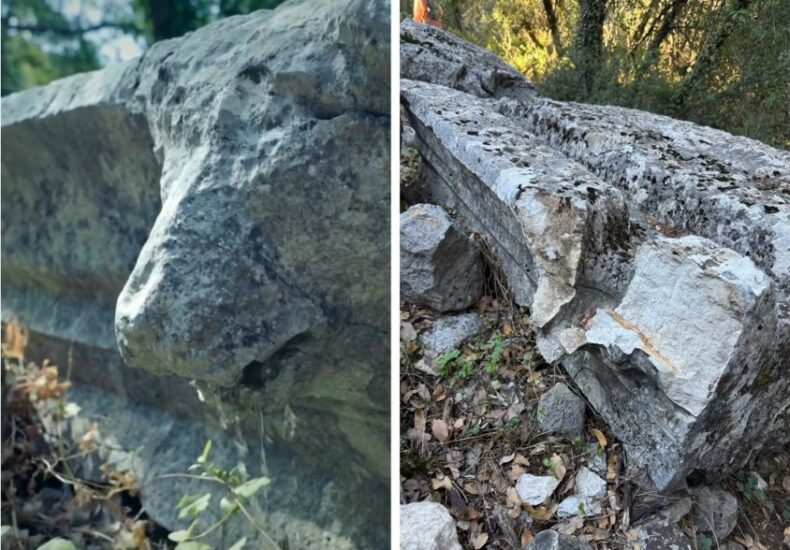
2,000-Year-Old Lion-Headed Gargoyle Damaged at Termessos, the City Alexander the Great Could Not Conquer
At the ancient city of Termessos, one of the most dramatic mountain strongholds of ancient Anatolia, a 2,000-year-old lion-headed gargoyle has been found broken, raising renewed concerns about the protection of archaeological heritage sites in Türkiye. Located at an altitude of around 1,150 meters in the Taurus Mountains near Antalya, Termessos is famously known as
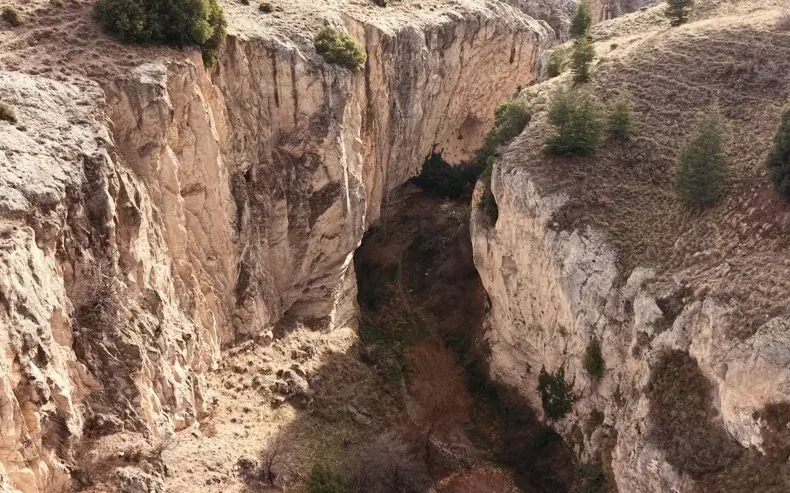
Noted by an English Traveler in 1835, Burdur’s Serençay Canyon Preserves Late Roman Settlement
In the rugged interior of southwestern Anatolia, a narrow canyon carved by nature also carries the marks of human survival and belief. Serençay Canyon, located in Türkiye’s Burdur province, was already attracting attention in the early 19th century, when an English traveler recorded its rock-cut landscape in 1835. Nearly two centuries later, the same canyon
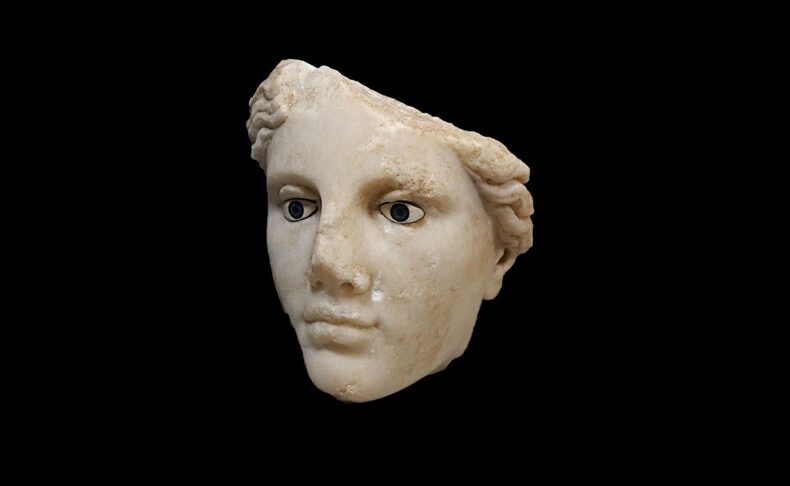
Monumental Hellenistic Goddess Head Unearthed in Metropolis: Early Analysis Suggests a Link to Hestia
The ancient city of Metropolis, set among the orchards and gentle hills of Izmir’s Torbalı district, has delivered one of its most impressive finds in recent years. Archaeologists working in a structure identified as a commercial building have uncovered the finely carved head of a monumental marble statue—a discovery that may redefine what is known

28 Antiquities Are Returning to Türkiye from the U.S., Including Boubon’s Lost Bronze Emperor
Twenty-eight looted antiquities are being repatriated from the United States to Türkiye, led by the long-missing bronze statue of a Roman emperor from the ancient city of Boubon. The group also includes a marble head of Demosthenes and several terracotta tablets from Düver—objects that disappeared decades ago before resurfacing in American collections. The Turkish Ministry
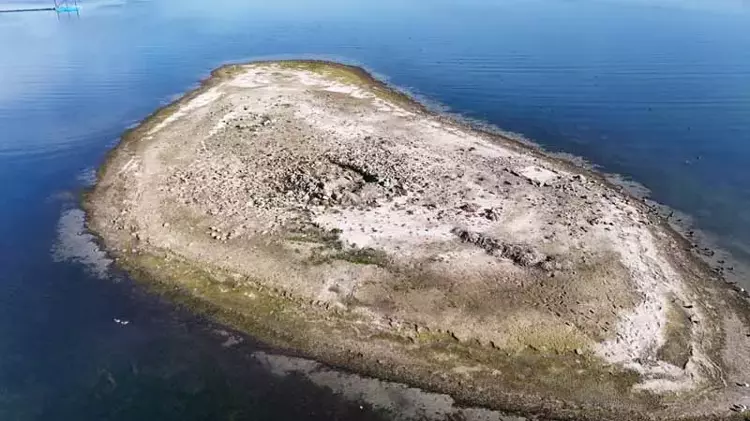
Newly Exposed Mosaic Structure in Lake Sapanca May Belong to a Late Antique Chapel, Researchers Say
As water levels recede in Lake Sapanca, a mosaic-floored building resurfaces, prompting renewed archaeological interest. The falling water level of Lake Sapanca in northwestern Türkiye has revealed a mosaic-paved structure that had remained submerged for centuries. As stone foundations and sections of patterned flooring emerged from the lakebed, specialists began reassessing the site’s function and

New Excavations at Perre Reveal Expanding Sacred Zones and Hidden Layers of Roman-Era Life
The 2025 archaeological season at Perre, one of the five principal cities of the ancient Kingdom of Commagene, has come to a close with significant new discoveries that deepen the understanding of the city’s religious and social landscape. The work, carried out across a newly uncovered 2,500-square-meter area in Adıyaman’s Örenli district, has revealed architectural

A Nearly Intact Medusa Mosaic at Ancient Kibyra Is Temporarily Closed to Protect It from Winter Damage
Anyone visiting the mountain-ringed plateau of Kibyra in southwestern Türkiye is usually greeted by an unexpected survivor: a vividly colored Medusa mosaic crafted from precision-cut marble. This winter, however, the famous artwork is hidden from view—not because of secrecy, but because it is simply too rare to risk exposure to cold, rain, and frost. Archaeologists
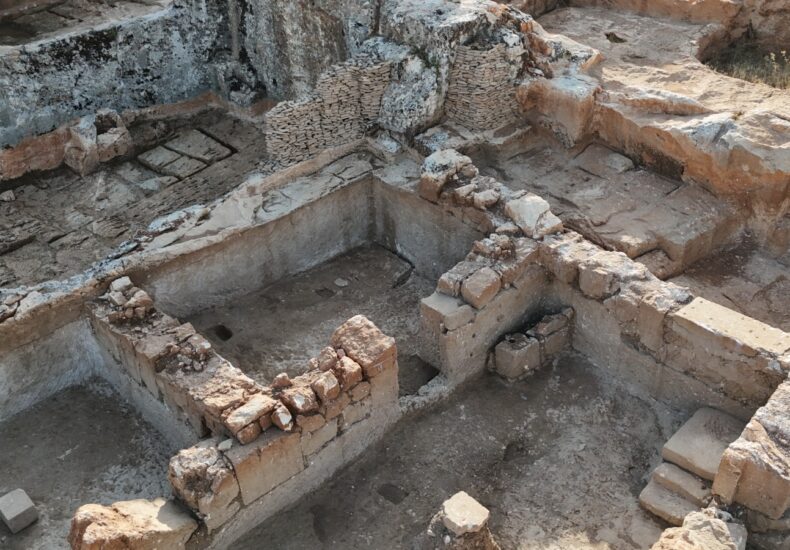
A Newly Uncovered 1,500-Year-Old Roman Dwelling Sheds Light on Daily Life in Ancient Commagene’s City of Perre
The 2025 excavation season at Perre has revealed one of the most informative architectural discoveries yet: a 1,500-year-old domestic complex built during the late Roman occupation of the ancient Commagene region. The find delivers a rare, ground-level view of how households functioned in a city positioned at a vital crossroads of trade and military movement.
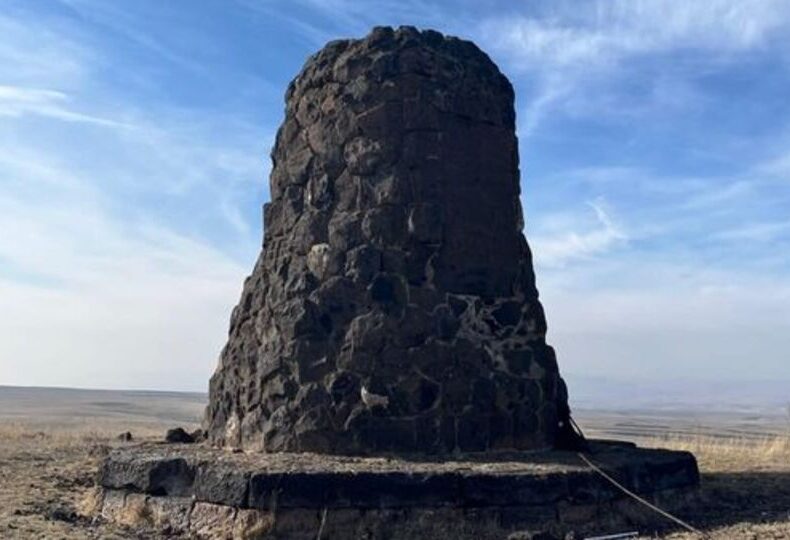
Mysterious Stone Structure Near Kars Raises New Questions About an Unstudied Peak
A solitary stone construction perched atop a hill outside Kars is drawing increasing attention, not because anyone understands it, but precisely because no one does. Rising above Bulanık village, the summit known locally as “Ziyaret Tepesi” or “Evliya Tepesi” hosts a five-meter-high structure whose origins remain completely undocumented. A hill between two mountains — and

Forgotten Neolithic Settlement in Bilecik: 9,000 Years of History Hidden Beneath the Grass
In western Türkiye, an archaeological discovery once hailed as a milestone in Neolithic research now lies buried under weeds. The 9,000-year-old settlement unearthed in Bilecik’s Bahçelievler district — among the earliest known farming communities of western Anatolia — has been left unprotected, sparking calls from historians and locals to transform it into an open-air museum
